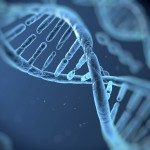Link to Pubmed [PMID] – 23481203
Link to DOI – 10.1016/B978-0-12-394311-8.00016-9B978-0-12-394311-8.00016-9
Prog Mol Biol Transl Sci 2013 ; 116(): 361-84
The tight control of cell-cell connectivity mediated by cadherins is a key issue in human health and disease. The human genome contains over 115 genes encoding cadherins and cadherin-like proteins. Defects in about 21 of these proteins (8 classical, 5 desmosomal, 8 atypical cadherins) have been linked to inherited disorders in humans, including skin and hair disorders, cardiomyopathies, sensory defects associated with deafness and blindness, and psychiatric disorders. With the advent of exome and genome sequencing techniques, we can anticipate the discovery of yet more evidence for the involvement of additional cadherins. Elucidation of the related physiopathological mechanisms underlying these conditions should help to clarify the roles played by these cadherins in tissues and the ways in which defects in different cadherins cause such a wide spectrum of associated phenotypes. These disorders also constitute disparate model systems for investigations of the relative contributions of mechanical adhesive strength and intracellular signaling pathways to the pathogenic process for a given cadherin.


